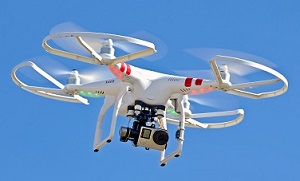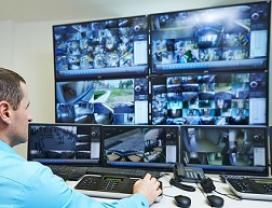Report to Congress Explores Safety and Security Technologies for Alternative Transportation Infrastructure
In-Reach Technological Innovations May Counter Risks
It was a sunny Saturday afternoon in a Miami neighborhood when 13-year-old Rudra Bhatt rode his bicycle home after spending the morning at a school activity. His father, tracking Rudra’s ride home through a cell phone app, noticed the boy’s signal had paused in the same location for several minutes.
Bhatt rushed to the location just a few blocks from home to find that his young son had been struck and killed by the driver of a pickup truck. The driver remained at the scene as first responders and law enforcement officers arrived to investigate the tragedy.
Fatalities like these are rare, but there is evidence that numerous alternative transportation facilities, from bicycle lanes and walking paths to public transit stops and stations, are vulnerable to a range of safety and security risks: violent and non-violent personal crime, property crimes, crashes, and weather or geologic hazards.
Safeguarding the Traveling Public

A recent report to Congress includes data on the frequency and severity of safety and security incidents at different types of alternative transportation facilities, such as public transit stations and biking paths. (Kasto/123RF photo)
The Fixing America’s Surface Transportation (FAST) Act, enacted in 2015, required that the Federal Transit Administration report to Congress on (1) safety and security incidents at alternative transportation facilities, and (2) recommendations for innovative technologies that could mitigate or address a range of incidents.
Alternative transportation includes public transit (bus and rail) stations, stops, and terminals; bicycle lanes; walking and biking paths; parking lots and rest areas; and sidewalks and streets.
Ensuring that these assets and systems are equipped with the most innovative, effective, and efficient safety and security technologies could help safeguard large segments of the traveling public.
An interdisciplinary Volpe Center team trained in social science, engineering, and economics carried out the research and supported the preparation of the report to Congress, issued in May 2017.
“Our team leveraged a broad range of industry expertise in security, connected vehicle technologies, and intelligent transportation systems,” said Volpe lead researcher Lora Chajka-Cadin.
The initial steps in the research process included gathering quantitative and qualitative data on the frequency and severity of safety and security incidents at different types of alternative transportation facilities. Next, Federal Transit Administration (FTA) and Volpe Center researchers classified high-priority incidents by evaluating crime statistics, interviewing FTA and Transportation Security Administration specialists, and evaluating media reports.
High-Priority Safety and Security Hazards and Interventions
The team’s focus shifted to a narrow set of high-priority safety and security hazards and potential interventions. Many of the practical innovative solutions available for small and large transportation systems leverage sensor technology, video and image capture, and advanced communications tools.
Automated sensor technology has emerged as an essential element of improved access control systems: turnstiles, parking lot gates, and building terminal access. Sensor technology is also central to motion-activated alerts, announcements, and lighting systems.
 Video and image capture technologies previously recorded from fixed positions, limiting their value at expansive facilities. However, emerging technologies allow for pan-tilt-zoom capability, facial recognition, and image capture from small unmanned aircraft: think drones deployed for video monitoring at crowded subway entrances during major public activities or events.
Video and image capture technologies previously recorded from fixed positions, limiting their value at expansive facilities. However, emerging technologies allow for pan-tilt-zoom capability, facial recognition, and image capture from small unmanned aircraft: think drones deployed for video monitoring at crowded subway entrances during major public activities or events.
Advanced communications tools can be deployed in a range of ways depending on system size. From wireless communications and radio-based communications for use when disasters or events disable cellular and internet capability to communications between passengers or users and vehicles, these advanced communications can address high-priority safety and security incidents before, during, and after an event.
Today’s U.S. transportation system features more technological connections between vehicles, facilities, and users than ever before. At the same time, the traveling public is using alternative modes of transportation beyond the private automobile.
“Our work begins to help legislators and transportation professionals learn about practical, available, and cost-effective innovative technologies that can address urgent alternative transportation safety and security risks,” said Volpe Center economist Christopher Calley.

